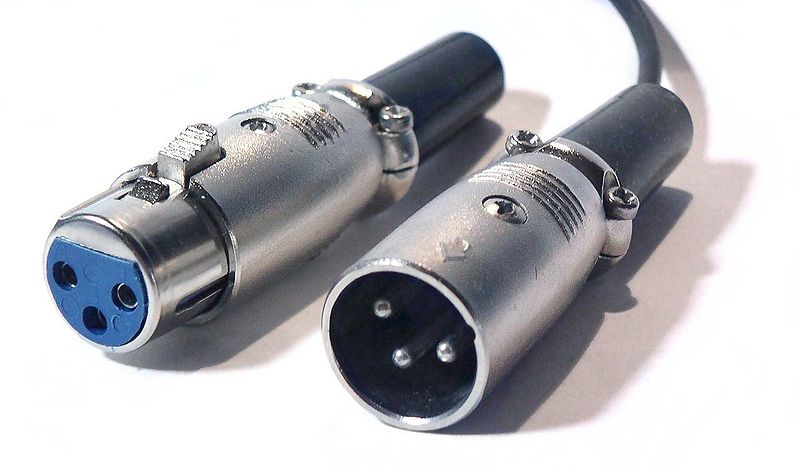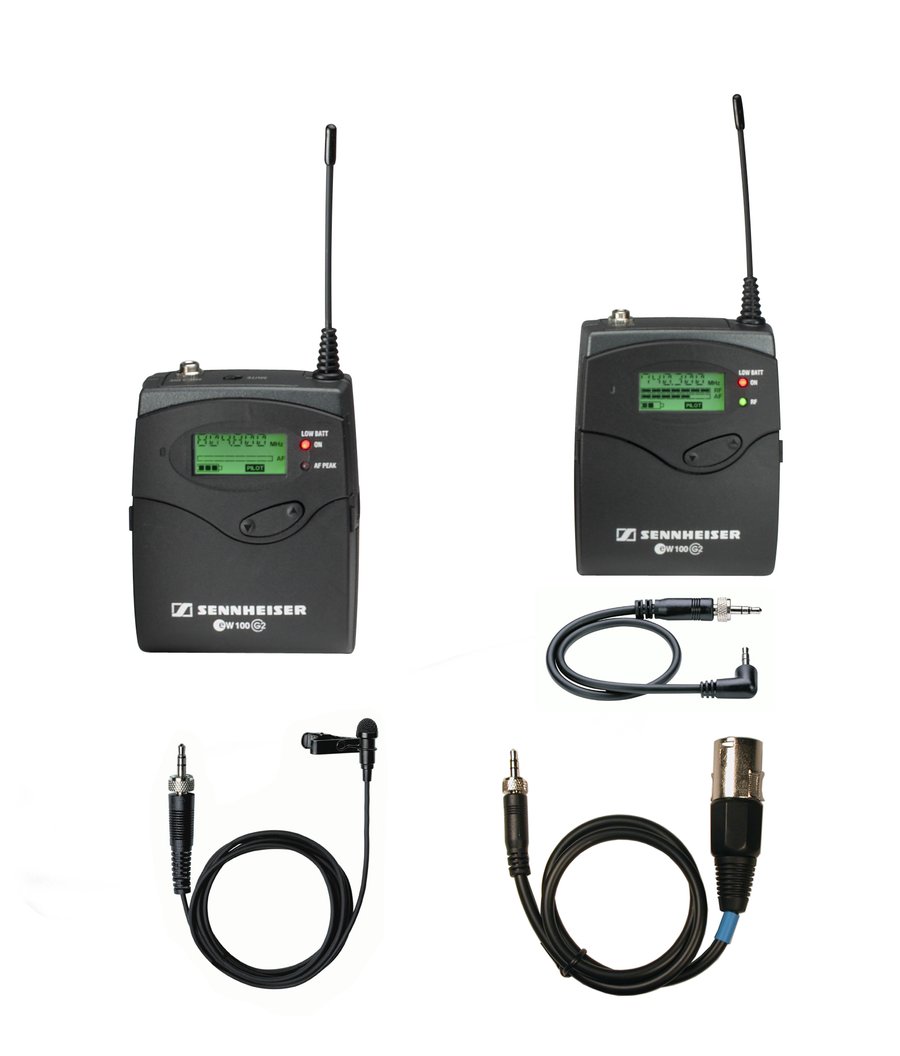

The above is from "Single Camera Video Production" Musburger, Focal Press
Dynamic Microphone: moving coil, doesn't require power
Condenser Microphone: (the one you will likely be using) requires either a battery or phantom power from the recording device, but is smaller and more sensitive.
Condenser vs. Dynamic Microphone http://homerecording.about.com/od/microphones101/a/mic_types.htm
Connectors: Most consumer cameras just have a mini phono jack "in" for audio (also called a 3.5mm stereo phono jack--you know it is stereo because it has two bands.)

but better quality cameras, and microphones will support the XLR 3 pin "balanced" connections.

On Camera Microphone
Lavelier or Lapel Microphone

Shotgun Microphone/Boom Microphone
A video on microphone choice (Appologies ahead of time for this video.But you might find it useful, and quite uninentionally hillarious. ) http://www.youtube.com/watch?v=ETX_nBG9zvU
Using a boom microphone http://www.youtube.com/watch?v=i-0o6miil9E
Headphones: Wear headphones at all times when recording sound, even from the on camera mic. If you don't have sound isolating "ear muff" type headphones and need to use earbuds pull a touque over your ears or wrap a scarf around to minimize hearing ambient sound.
Microphone Placement
-the microphone placement should (to some degree) match the perspecive of the shot. If it is a very wide shot you want the microphone farther away. Or a least you want to record some ambient sound for an ambience track that reflects that perspective. However in this cirucmstance if you also want a clear speech recording then you will have to likely record a take (either on site or in a studio) with a microphone closer to the talent and dub it in sycn with the image in post production.
-consistancy from take to take is important, you will be cutting all the scenes and parts of takes together so it is very noticable if mike placement keeps shifting.
The microphone type should also be type for the shot and type of space, if it is too narrow in pick up pattern for instance, you would miss the reverberation which is part of the acoustic nature of a stairway or auditorium for instance.
-if seeing the microphone in your shot is not a problem you want to place the microphone a few inches from the subjects mouth and pointed at their mouth, but below their face, you want to be far enough away (do several listening tests) so that P and S sounds do not cause pops and hiss on your recording.